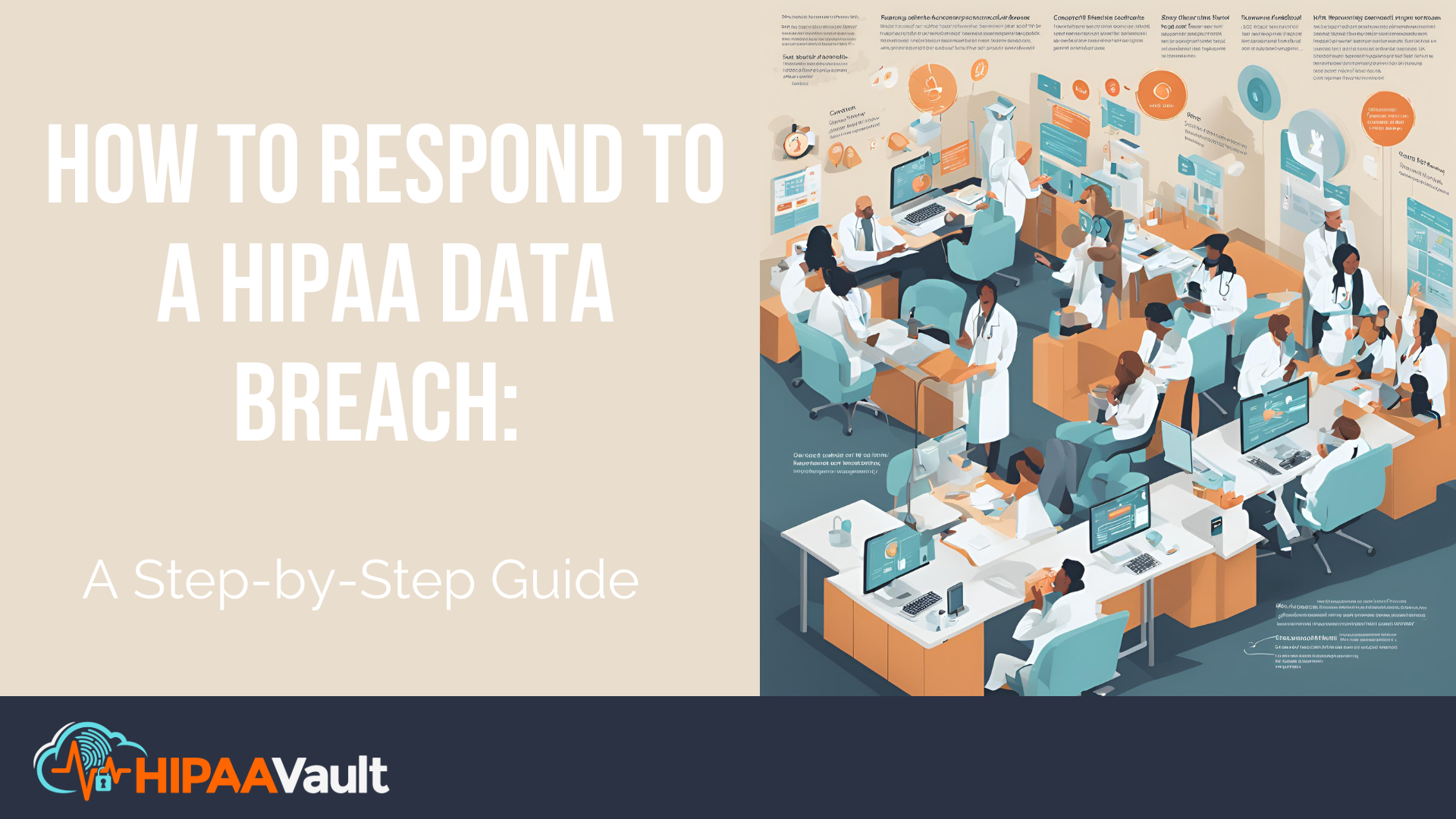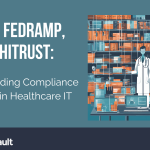
Introduction
Data breaches in the healthcare industry are on the rise, with cybercriminals continuously targeting sensitive patient information. The consequences of a breach are severe, with financial penalties, legal liabilities, and reputational damage threatening the stability of healthcare organizations. According to IBM’s Cost of a Data Breach Report, healthcare data breaches cost an average of $10.93 million per incident in 2023, making them the most expensive breaches across all industries.
If your organization experiences a data breach, a swift and compliant response is critical. Failing to address a breach properly can lead to increased fines and loss of patient trust. A well-structured incident response plan ensures compliance with HIPAA regulations while safeguarding your healthcare organization from further risks. This guide outlines the essential steps to detect, report, and mitigate HIPAA data breaches, helping your organization maintain compliance and protect patient data.
Step 1: Detect and Contain the Breach
Identifying Unauthorized Access
One of the first signs of a breach may be unusual network activity, unauthorized login attempts, or missing data. Hackers often exploit vulnerabilities through phishing attacks, weak passwords, and unpatched software. Healthcare organizations should leverage robust security tools, such as:
- Intrusion detection systems (IDS) to monitor network traffic for suspicious activity.
- Audit logs to track data access and modifications in real time.
- Security alerts from managed security providers like HIPAA Vault to identify breaches instantly.
Immediate Containment Strategies
Once a breach is identified, immediate containment is crucial to prevent further exposure. Steps include:
- Isolating compromised systems from the network to stop unauthorized access.
- Revoking access credentials for affected user accounts to mitigate insider threats.
- Applying security patches and updates to close exploited vulnerabilities.
- Activating backup and disaster recovery protocols to restore lost or encrypted data quickly.
Containing the breach quickly can minimize the damage and ensure that sensitive patient information remains protected.
Step 2: Investigate and Assess the Impact
Conducting a Forensic Analysis
A thorough investigation is essential to determine the cause, extent, and potential impact of the breach. Key steps include:
- Identifying the source of the breach, whether it was due to phishing, malware, or unauthorized access.
- Assessing how long the breach remained undetected, as prolonged exposure increases risk.
- Determining the type of compromised data, such as patient records, billing details, or Social Security numbers.
Partnering with a cybersecurity firm like HIPAA Vault ensures a comprehensive forensic analysis and helps identify vulnerabilities before they can be exploited again.
Determining the Scope of Compromised Data
HIPAA defines a breach as the acquisition, access, or disclosure of protected health information (PHI) without authorization. It is crucial to:
- Identify the number of affected individuals and classify the sensitivity of exposed data.
- Determine whether the data was encrypted to assess the severity of exposure.
- Evaluate any misuse of PHI to understand potential patient harm.
Step 3: Notify Affected Parties and Regulatory Agencies
Understanding the HIPAA Breach Notification Rule
The HIPAA Breach Notification Rule (45 CFR § 164.400-414) outlines mandatory reporting requirements for breaches. Organizations must:
- Report breaches affecting 500+ individuals to the U.S. Department of Health and Human Services (HHS), affected individuals, and the media within 60 days.
- Report breaches affecting fewer than 500 individuals to HHS annually and to affected individuals without unreasonable delay.
Timelines for Notifications
- Patients: Provide written notification detailing the breach, compromised data, and protective measures.
- HHS Office for Civil Rights (OCR): Submit reports via the OCR breach portal for regulatory compliance.
- Media (if applicable): Issue a press release for large-scale breaches affecting 500+ individuals.
Failing to notify affected parties promptly can result in additional fines and increased scrutiny from regulators.
Step 4: Strengthen Security Measures to Prevent Future Breaches
Updating Access Controls and Encryption Policies
To enhance security and minimize risks:
- Implement multi-factor authentication (MFA) to prevent unauthorized access.
- Restrict access to PHI based on job roles and necessity.
- Encrypt PHI both at rest and in transit to prevent data exposure in case of breaches.
Conducting Post-Breach Security Audits and Training
After a breach, a full security audit should be conducted to identify vulnerabilities. Additional proactive measures include:
- Regular employee cybersecurity training to recognize and respond to phishing attacks.
- Simulated phishing tests to assess staff awareness and preparedness.
- Continuous monitoring with managed security services like HIPAA Vault to detect future threats in real time.
Step 5: Document and Report the Incident
Compliance Requirements for Breach Documentation
HIPAA mandates that organizations maintain detailed documentation of:
- The root cause and extent of the breach.
- Actions taken to mitigate damage and prevent recurrence.
- Preventive measures implemented post-breach.
Proper documentation ensures regulatory compliance and provides insights for improving cybersecurity strategies.
Working with Legal and Cybersecurity Teams
Healthcare organizations should engage:
- Legal counsel to ensure compliance with state and federal breach notification laws.
- Cybersecurity experts to conduct penetration testing and risk assessments.
- HIPAA-compliant hosting providers like HIPAA Vault to manage secure cloud infrastructure and enhance security.
Conclusion
A proactive approach to HIPAA compliance is essential in reducing the risk of a data breach. By implementing robust security measures, maintaining continuous monitoring, and having a well-prepared incident response plan, healthcare organizations can protect patient data and stay compliant with HIPAA regulations.
HIPAA Vault offers managed security solutions, cloud hosting, and 24/7 compliance support to help organizations secure their sensitive healthcare data. Contact us today to learn more about our HIPAA-compliant services.
Need help securing your healthcare data? Visit HIPAA Vault for expert solutions in HIPAA-compliant cloud hosting and cybersecurity.





